2.01.2024
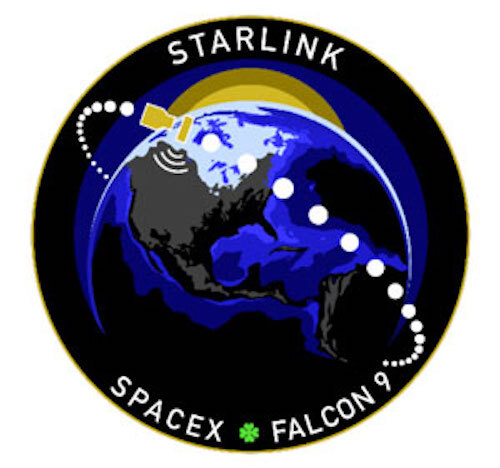
SpaceX Targets Tuesday for 2024’s First Launch, Busy January Lies Ahead
After a record-setting 2023, SpaceX is aiming to kick off the New Year with the launch of an all-new Falcon 9 booster out of Vandenberg Space Force Base, Calif., in the early evening hours of Tuesday. The B1082 core—originally slated to fly last year’s final mission before slipping into first place on the 2024 manifest—will rise from Space Launch Complex (SLC)-4E at the mountain-ringed California site during a four-hour “window” that opens at 6:13 p.m. PST, laden with 21 Starlink low-orbiting internet communications satellites.
SpaceX is reportedly aiming for as many as 144 launches, an average of 12 per month, before the end of 2024, an ambitious prospect. Even at its current cadence, the Hawthorne, Calif.-headquartered organization has managed nine launches per consecutive month since August 2023; if that flight rate continues at its present pace with no uplift, 2024 should hit at least 118 missions by next New Year’s Eve.
It comes on the coattails of an impressive 2023, which saw 96 orbital missions from the East and West Coasts—91 of which were executed using 15 “single-stick” Falcon 9 boosters and five flights by the mammoth, triple-barreled Falcon Heavy—and reflected a more than 30-percent hike over 2022’s prior 61-launch record. And despite the disappointing loss of fleet-leading B1058 over the Christmas period, multiple other records were set: for the first time, boosters flew 16th, 17th, 18thand 19th missions, twice secured launch-to-launch records of four hours and 12 minutes in March and an empirical two hours and 54 minutes last week and more Falcon Heavies flew in 2023 than all previous years combined.
Launch rates rose from seven per month at this point last year to eight in Marchand nine last summer, although no individual Falcon 9 booster has yet matched or exceeded the 21-day turnaround record set in April 2022. Added to last year’s accolades list were the first pair of test launches by SpaceX’s 394-foot-tall (120-meter) Starship/Super Heavy stack out of Starbase in Boca Chica, Texas: the first in April cleared the pad and attained altitude, but was remotely destroyed by range safety assets, whilst the second in November achieved a full-duration first-stage burn by the booster’s 33 Raptor engines and the successful separation of Starship itself.
Last week, in a cacophony of golden flame and staccato din, SpaceX static-fired all 33 Raptors of its third Super Heavy on the pad at Starbase. Also test-fired was a single Raptor aboard Flight Three’s Starship, “demonstrating,” tweeted SpaceX, “a flight-like startup for an in-space burn”, although no definitive date for the third test has been revealed.
Kicking off 2024 will be newcomer B1082, which brings to 15 the total number of Falcon 9 cores in active operational service. As is customary ahead of a maiden mission, the booster was put through a 77-second Static Fire Test of its nine Merlin 1D+ engines at SpaceX’s Rocket Development Facility in McGregor, Texas, in mid-October, before overland transportation to the West Coast.
Its maiden launch was originally scheduled for early December but was pushed back to mid-month and eventually just prior to New Year, in response to a deteriorating weather picture at Vandenberg. A targeted T-0 at 7:17 p.m. PST on 28 December was called off, making last week’s pair of missions from Florida—a Falcon Heavy carrying the highly classified USSF-52 for the U.S. Space Force and a Starlink-laden Falcon 9—the final curtain-call for SpaceX in 2023.
In the meantime, the West Coast-based Autonomous Spaceport Drone Ship (ASDS), “Of Course I Still Love You”, put briefly to sea out of Port of Long Beach earlier in December, but with the launch delay it returned to port. It deployed a second time shortly after Christmas for B1082’s New Year climb to space.
Should Tuesday’s four-hour window be missed, another group of T-0 opportunities will open at 5:51 p.m. PST Wednesday. Aboard B1082 for the mission are 21 Starlinks, tipping the scales at 37,000 pounds (16,800 kilograms), which will be released into space about 62 minutes after liftoff.
As a network, Starlink facilitates high-speed and low-latency internet provision to 70 sovereign nations and international markets in North and South America, Europe, Asia, Oceania and Africa. Landlocked Eswatini—formerly Swaziland in southern Africa—and Paraguay joined Starlink last month.
The downsized Starlink “V2 Mini” satellites, first flown last February, boast three to four times greater “usable” bandwidth than earlier Starlink iterations. “V2 Minis include key technologies—such as more powerful phased-array antennas and the use of E-Band for backhaul—which will allow Starlink to provide 4x more capacity per satellite than earlier iterations,” SpaceX explained. “Among other enhancements, V2 Minis are equipped with new argon Hall thrusters for on-orbit maneuvering.”
Florida-based intercity operator Brightline adopted Starlink on its trains earlier in 2023, the first passenger rail service in the world to do so. Additionally, El Salvador’s Ministry of Education has begun integrating Starlink capability into its schools to help close the digital divide between urban and remote rural communities and 50 Rwandan schools are now connected via Starlink’s high-speed internet service.
Among B1082’s haul are the first six “Direct to Cell” Starlinks. These will reportedly enable mobile network providers to offer “seamless global access to texting, calling and browsing” whether “on land, lakes or coastal waters”.
Although SpaceX reveals precious little detail of a forthcoming manifest, No Earlier Than (NET) dates for two more January missions are definitively known. Twice-flown Dragon Freedom will launch from from historic Pad 39A at Florida’s Kennedy Space Center (KSC), no earlier than 5:06 p.m. EST on the 17th for AxiomSpace, Inc.’s all-private Ax-3 crew-carrying mission to the International Space Station (ISS), followed by Northrop Grumman Corp.’s NG-20 Cygnus cargo ship—named in honor of NASA astronaut and physician Dr. Patty Hilliard-Robertson—from Space Launch Complex (SLC)-40 at Cape Canaveral Space Force Station on the 29th.
Also baselined “for early January” is Sweden’s 3,300-pound (1,500-kilogram) Ovzon-3 High Throughput (HTP) broadband communications satellite, destined for insertion into geostationary orbit at a mean altitude of 22,300 miles (35,900 kilometers). And judging from Starlink’s impressive cadence over the last half-year—averaging six to eight launches per month of these flat-packed internet communications satellites between July and December—it can be expected that a busy January lies ahead.
Quelle: AS
----
Update: 3.01.2024
.
On Tuesday, January 2 at 7:44 p.m. PT, Falcon 9 launched 21 Starlink satellites to low-Earth orbit from Space Launch Complex 4 East (SLC-4E) at Vandenberg Space Force Base in California.
This was the first flight for the first stage booster supporting this mission.
This launch included the first six Starlink satellites with Direct to Cell capabilities that enable mobile network operators around the world to provide seamless global access to texting, calling, and browsing wherever you may be on land, lakes, or coastal waters without changing hardware or firmware. The enhanced Starlink satellites have an advanced modem that acts as a cellphone tower in space, eliminating deadzones with network integration similar to a standard roaming partner.
Global cellular providers using Direct to Cell to gain reciprocal access in all partner nations include T-Mobile in the U.S., Rogers in Canada, KDDI in Japan, Optus in Australia, One NZ in New Zealand, Salt in Switzerland, and Entel in Chile and Peru.
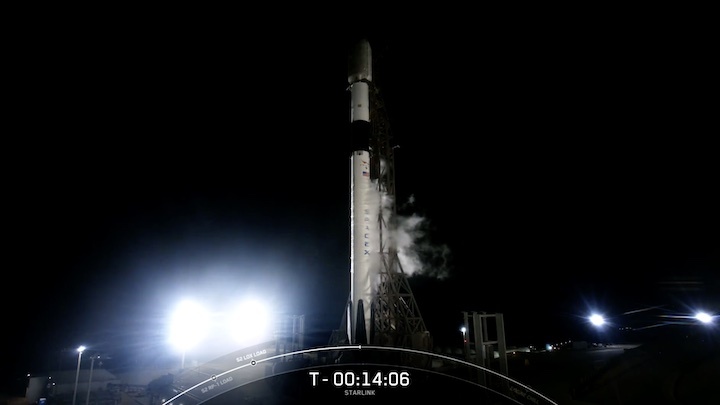

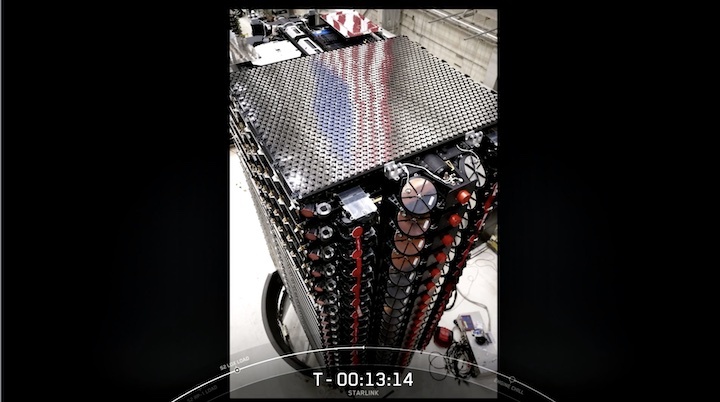
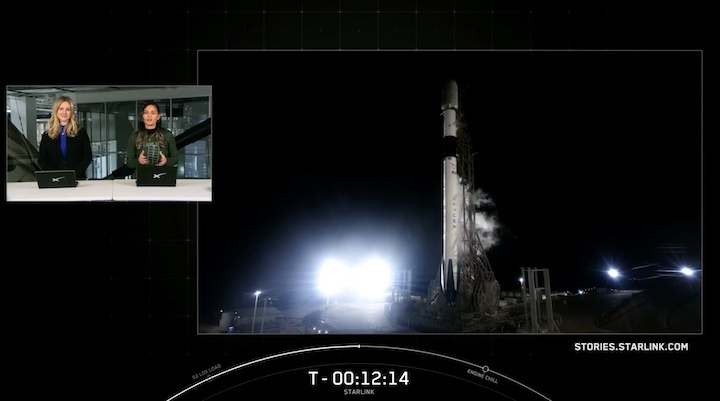
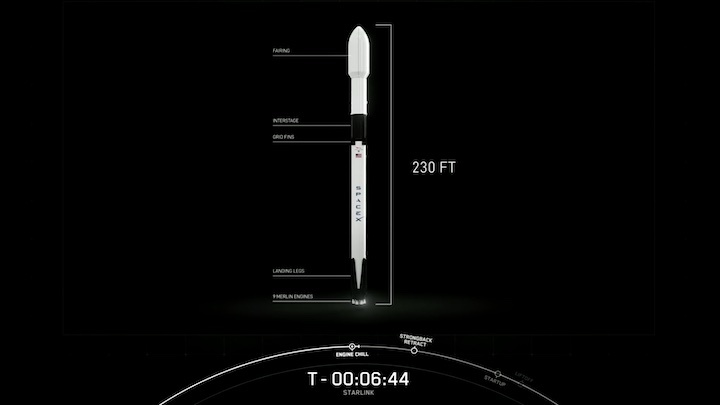
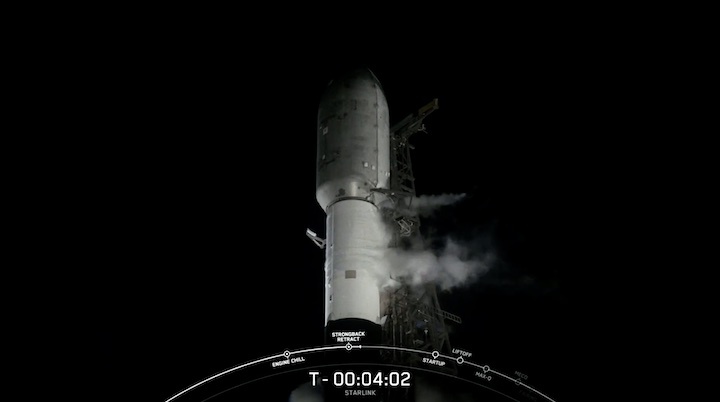
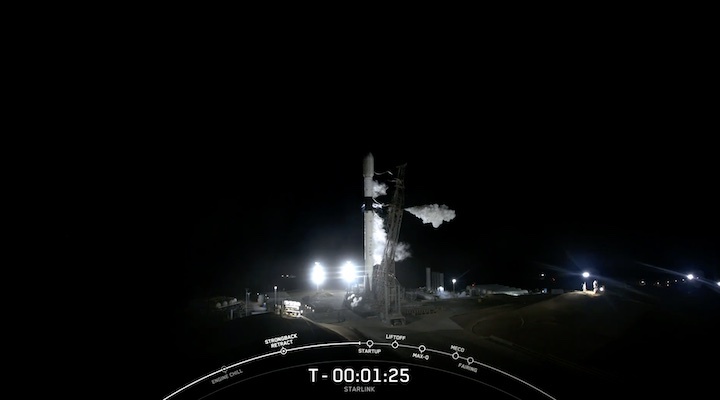
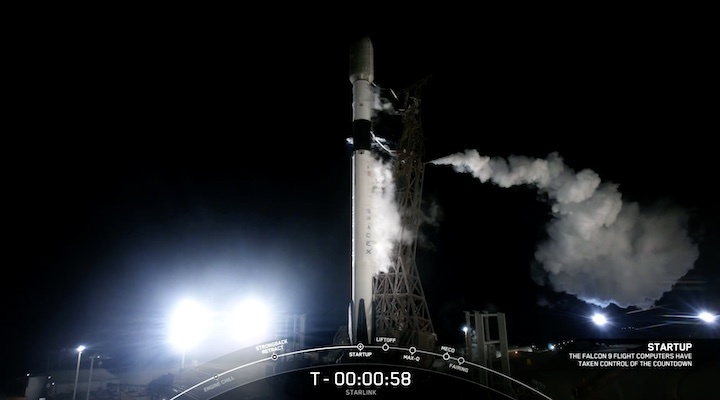
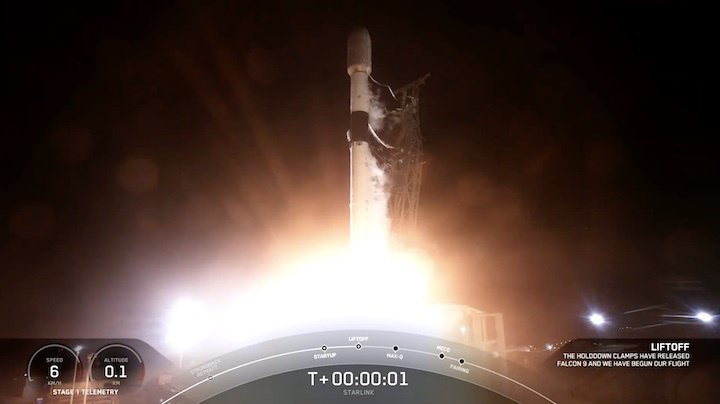
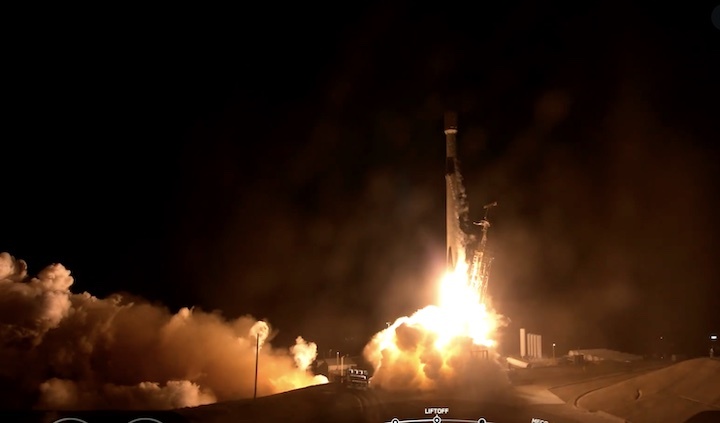
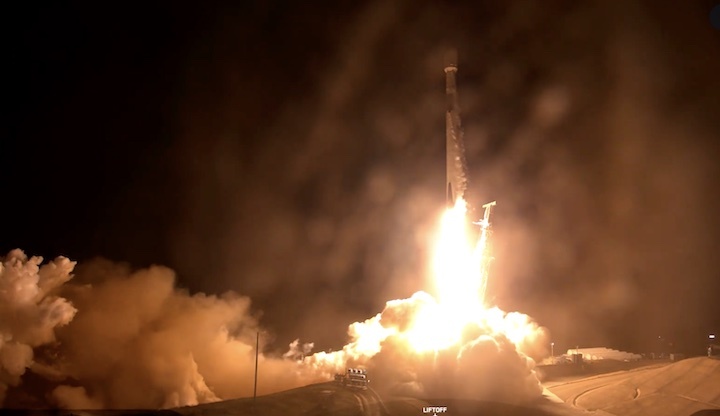
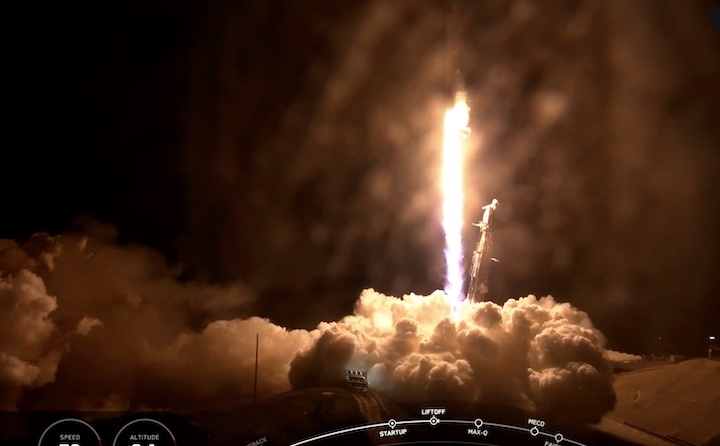
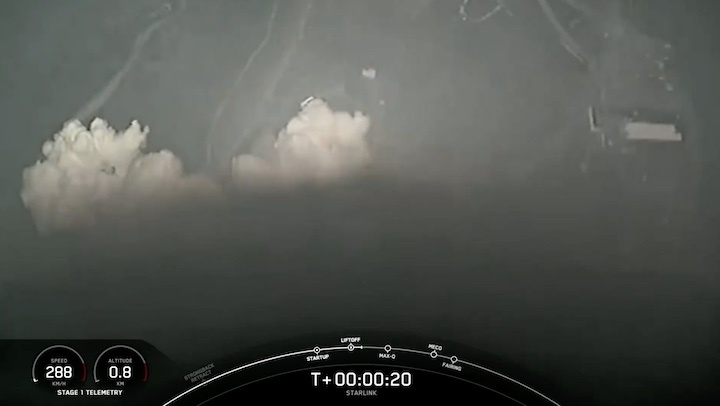
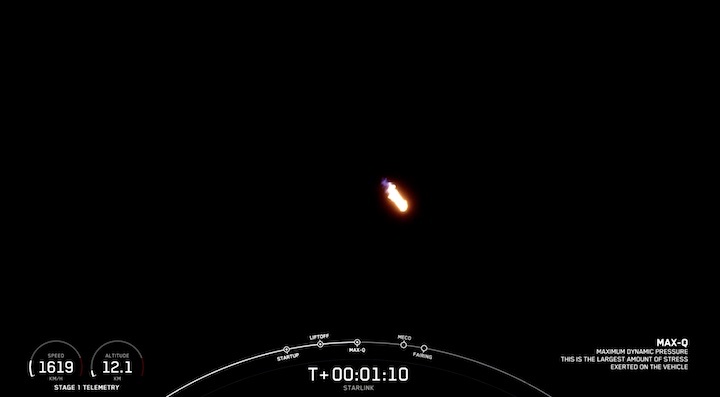
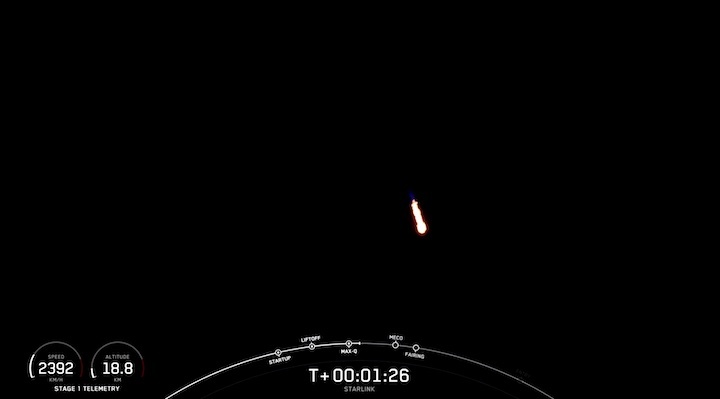
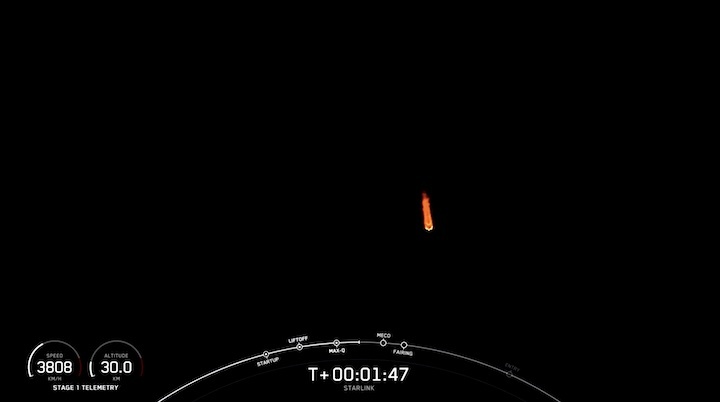
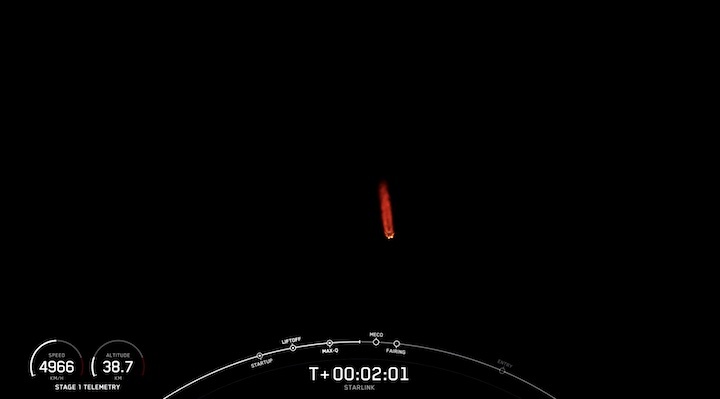
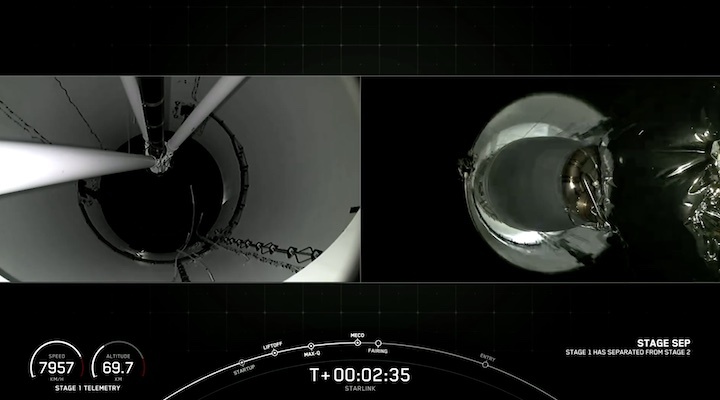
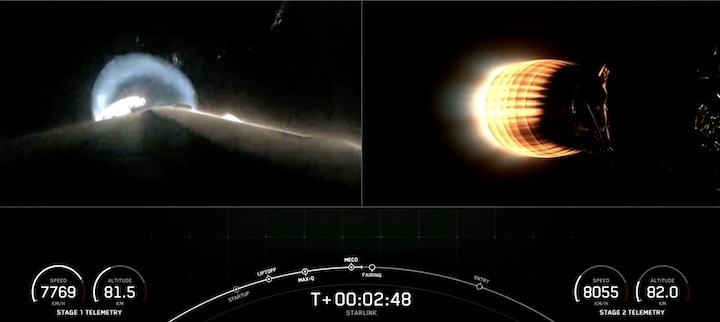
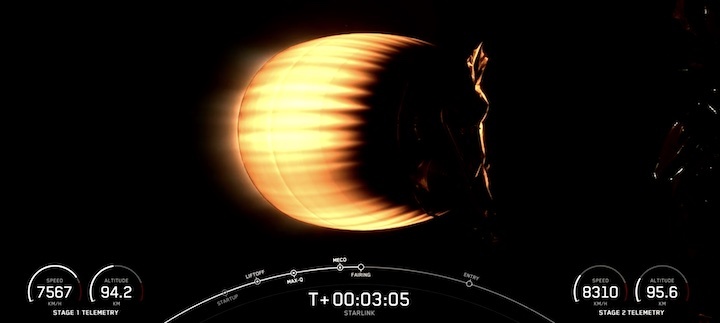
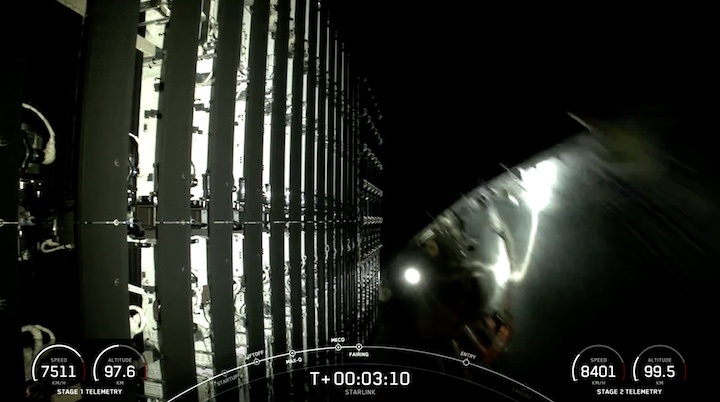
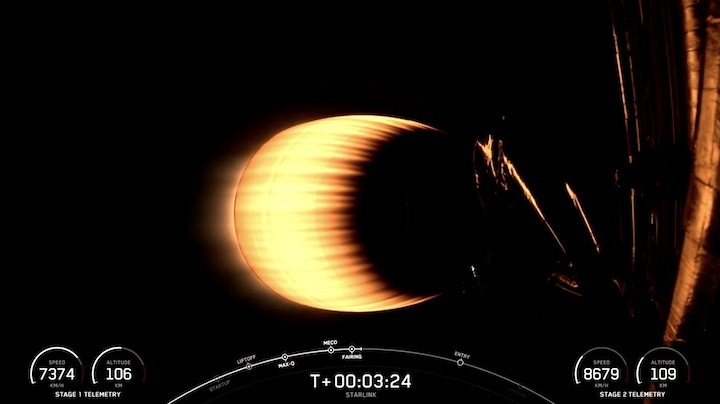
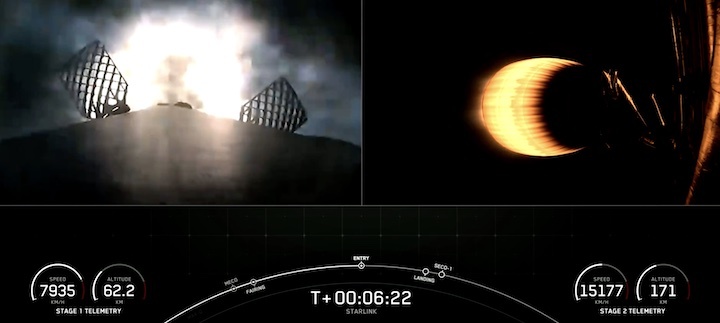

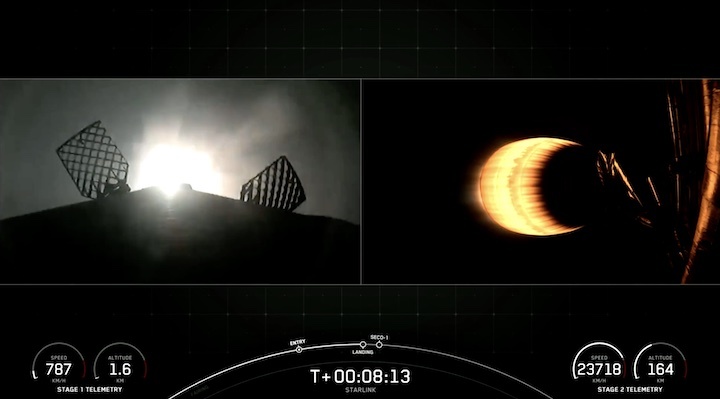






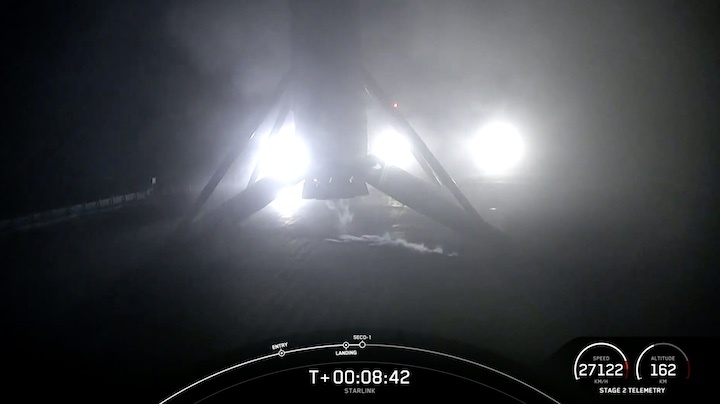
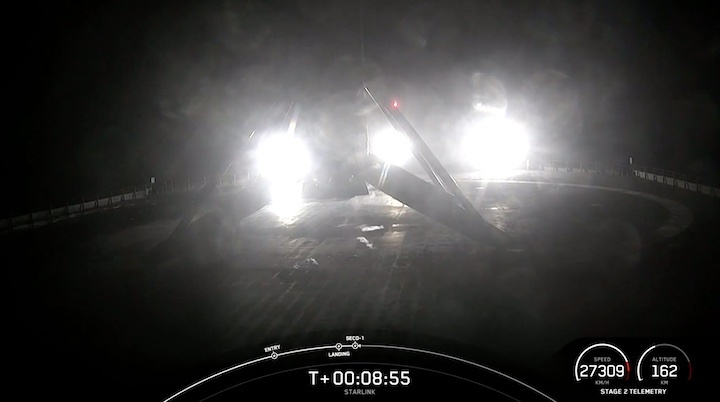
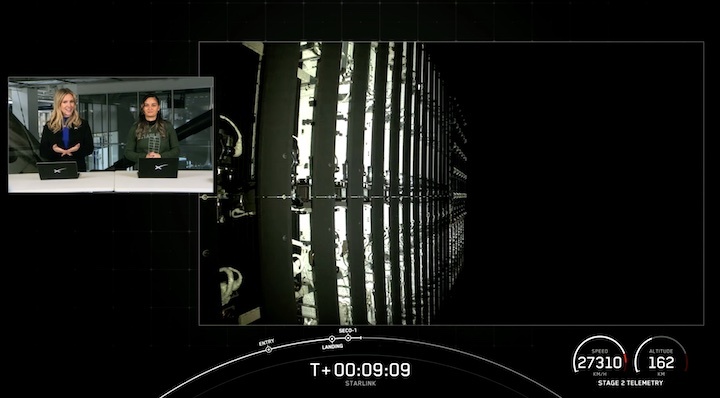
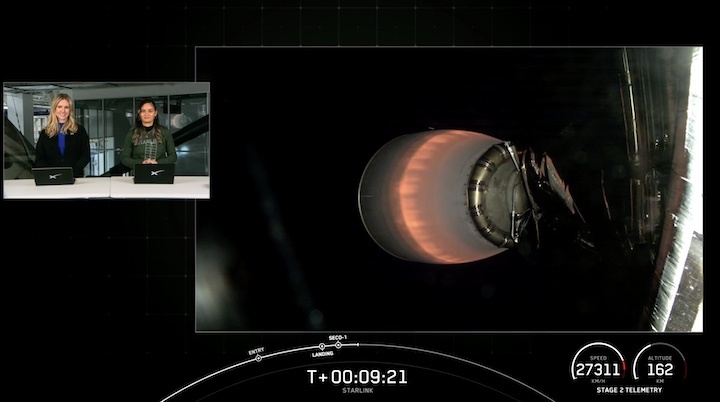
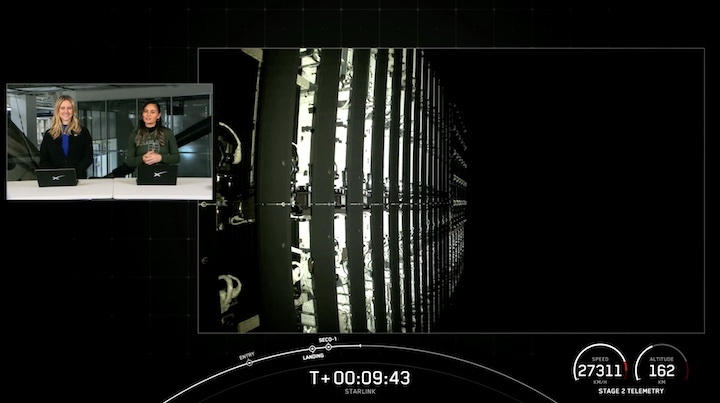
Quelle: SpaceX

